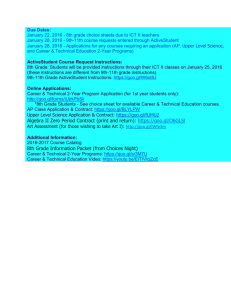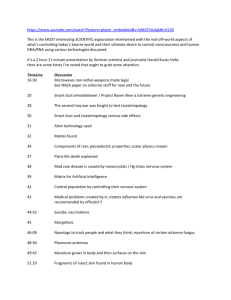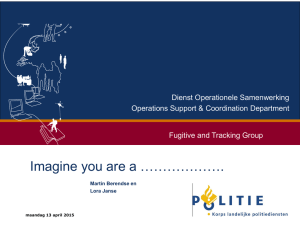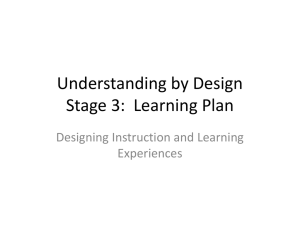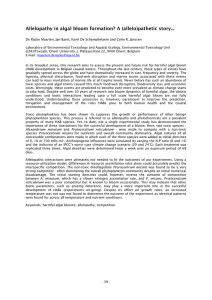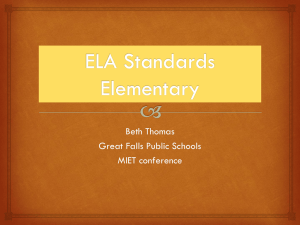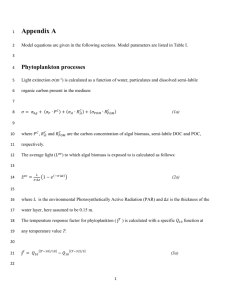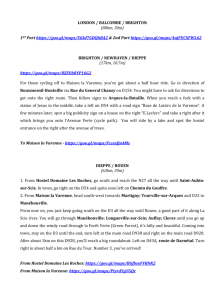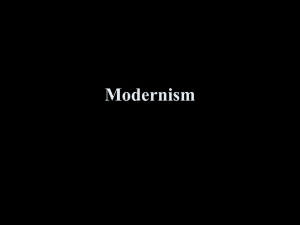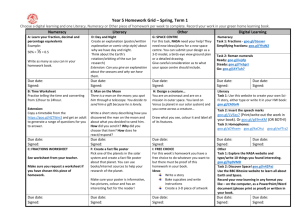What`s Growing On… Student Lab Experiment: What is the Effect of
advertisement
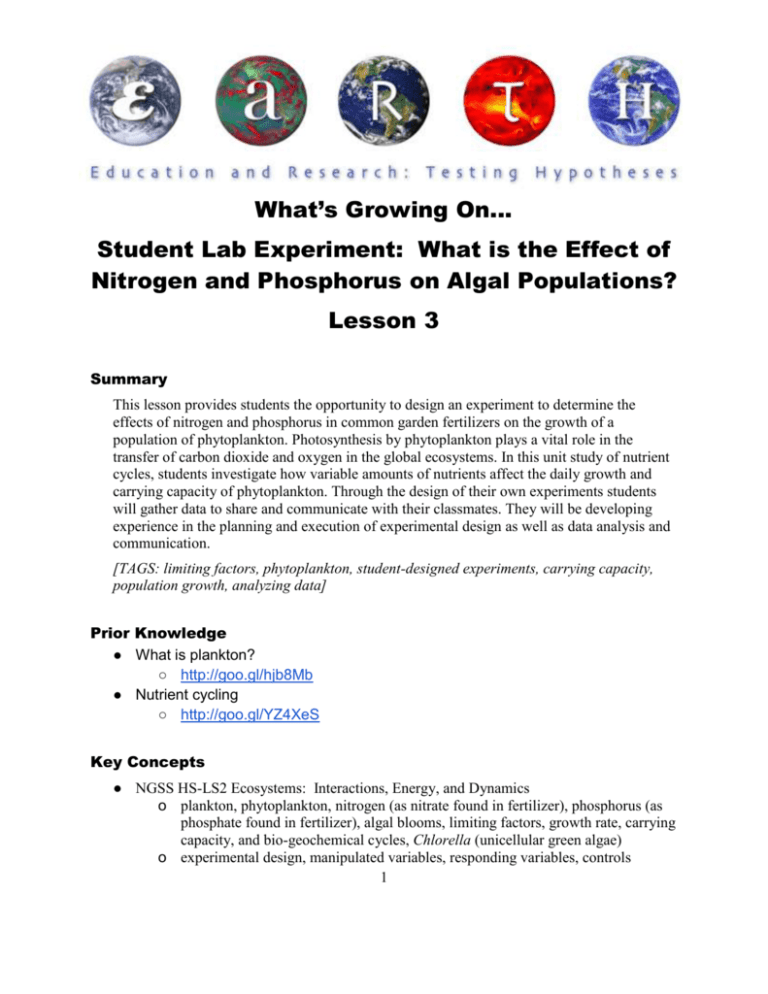
What’s Growing On… Student Lab Experiment: What is the Effect of Nitrogen and Phosphorus on Algal Populations? Lesson 3 Summary This lesson provides students the opportunity to design an experiment to determine the effects of nitrogen and phosphorus in common garden fertilizers on the growth of a population of phytoplankton. Photosynthesis by phytoplankton plays a vital role in the transfer of carbon dioxide and oxygen in the global ecosystems. In this unit study of nutrient cycles, students investigate how variable amounts of nutrients affect the daily growth and carrying capacity of phytoplankton. Through the design of their own experiments students will gather data to share and communicate with their classmates. They will be developing experience in the planning and execution of experimental design as well as data analysis and communication. [TAGS: limiting factors, phytoplankton, student-designed experiments, carrying capacity, population growth, analyzing data] Prior Knowledge ● What is plankton? ○ http://goo.gl/hjb8Mb ● Nutrient cycling ○ http://goo.gl/YZ4XeS Key Concepts ● NGSS HS-LS2 Ecosystems: Interactions, Energy, and Dynamics o plankton, phytoplankton, nitrogen (as nitrate found in fertilizer), phosphorus (as phosphate found in fertilizer), algal blooms, limiting factors, growth rate, carrying capacity, and bio-geochemical cycles, Chlorella (unicellular green algae) o experimental design, manipulated variables, responding variables, controls 1 o data table design, graphical design o determining biomass density, calculating growth rate, determining carrying capacity for an algal population ● NGSS Science and Engineering Practices ○ Constructing Explanations and Designing Conclusions ■ Students will construct and revise an explanation based on valid and reliable evidence obtained from a variety of sources (including students’ own investigations) Objectives ● Students will make predictions on how nitrogen and phosphorus affect the growth (density) of an algal population. ● Students will make observations and record accurate data for algal density. ● Students will communicate results in a data table and analyze data in order to create graphs, complete analysis questions, and participate in a teacher-led class discussion. Materials ● Teacher Guide and Background Information → https://goo.gl/v3yvOl ● Student Design Sheet → https://goo.gl/rfsuxF Procedure ● Please see the Teacher Guide and Background Information for the full procedure. Assessment ● Performance - Students will conduct an experiment and collect data to answer individual or class hypothesis on the effect of nutrients on algal growth. ● Product - Students will produce data representations (data tables, graphs, photographs) of population density to display and share experimental results. Students will share results with the class by means of a Gallery Walk and Class Discussion. ● Informal assessments— As students are working on their experiments, teacher will observe student collaboration; teacher will also observe student participation during Gallery Walk and Class Discussion. ● Formal Assessment—Student data tables and graphs will be assessed by rubrics. See Sample Rubrics 2 Additional Resources ● Serial dilutions → http://goo.gl/IOXGBN ● Nitrate-Phosphate lab → https://goo.gl/4ZC9yf ● Building a Bloom → https://goo.gl/8juHmg ● Digital Student Product links: ○ Pic Collage app: www.piccollage.com ○ Piktochart: www.piktochart.com ○ Easel.ly: www.easel.ly ○ Visualize: www.visualize.me 3

